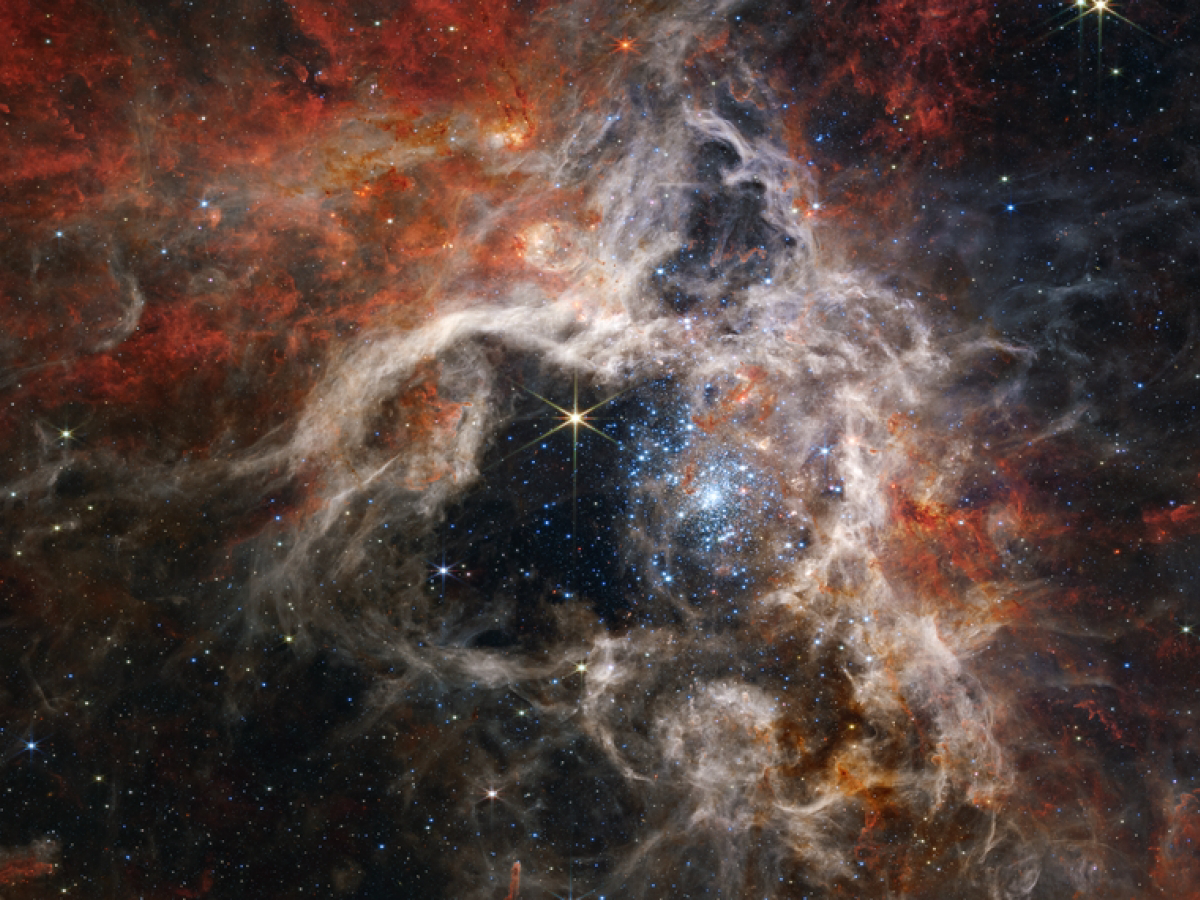Webb Telescope Just Found Something Unprecedented In The Orion Nebula
The Orion Nebula is one of the most spectacular sights in the night sky, a glowing cloud of gas and dust where stars are born. But it also hides some secrets that only the most powerful telescopes can reveal. Recently, the James Webb Space Telescope (JWST), the successor of the Hubble Space Telescope, made a stunning discovery in this stellar nursery: a new carbon compound that has never been seen before in space.
A New Carbon Compound in Space
The JWST is the most advanced infrared observatory ever built, capable of peering through the dust that obscures many astronomical objects. Using its Near Infrared Camera (NIRCam) instrument, a team of international scientists observed the inner region of the Orion Nebula, called the Trapezium Cluster. This cluster is home to about a thousand young stars, all crammed into a space only four light-years across.
Among the many features that the JWST captured in unprecedented detail, one stood out: a faint emission from a carbon-based ion, or a molecule with an extra electron. This ion, called methyl cation (CH3+), is likely an important building block of interstellar carbon chemistry, but it had never been detected in space before.
The methyl cation was found in a protoplanetary disk around a young star, about 1,350 light-years away from Earth. A protoplanetary disk is a ring of gas and dust that surrounds a star and may eventually form planets. The methyl cation emission indicates that this disk is rich in organic molecules, which are essential for life as we know it.
The discovery of methyl cation in space is a major breakthrough for astrochemistry, the study of how molecules form and evolve in different environments. It also demonstrates the power and sensitivity of the JWST, which can detect faint signals that other telescopes cannot.
More Mysteries to Unravel
The methyl cation is not the only intriguing feature that the JWST revealed in the Orion Nebula. The telescope also captured stunning images of other phenomena that shed light on how stars and planets form and evolve.
For example, the JWST observed the Orion Bar, a wall of dense gas and dust that runs across the image. The Orion Bar is illuminated by the intense radiation from the brightest star in the cluster, creating a colorful display of ionized gas, hydrocarbons, molecular gas, dust and scattered starlight.
The JWST also spotted many filaments, globules and young stars in various stages of development. Some of these stars have planet-forming disks around them, which are being eroded or "photo-evaporated" by the radiation from nearby stars. The JWST can see these disks in detail and measure their sizes, shapes and compositions.
Another phenomenon that the JWST observed is the jets and outflows that many young stars eject. These are streams of material that are launched from the poles of rotating stars, carrying away angular momentum and energy. The JWST can trace these jets and outflows and study their interactions with the surrounding medium.
The Orion Nebula is a treasure trove of information for astronomers who want to understand how stars and planets are born and how they affect each other. The JWST is an invaluable tool for exploring this fascinating region and uncovering its secrets. With its unprecedented capabilities, the JWST will open new windows into the cosmos and reveal wonders that we have never imagined before.
Source:
FAQ's
What has been discovered by the James Webb telescope recently?
Webb Maps and Finds Traces of Water in Gas Giant's Atmosphere. May 31, 2023 - Scientists identified water vapor in the atmosphere of WASP-18 b, and made a temperature map of the planet as it slipped behind, and reappeared from, its star.
Has the Webb telescope found anything?
NASA's James Webb Space Telescope revealing new details of the early universe. The earliest-known galaxy ever found was recently uncovered and confirmed by NASA's James Webb Space Telescope.
What object did the James Webb telescope find?
James Webb Space Telescope discovers water around a mysterious comet. The study of Comet 238P/Read, which lurks in the main asteroid belt, could help reveal the source of Earth's water, a vital ingredient for life on our planet.
What is happening in the Orion Nebula?
The Orion Nebula is an example of a stellar nursery where new stars are being born. Observations of the nebula have revealed approximately 700 stars in various stages of formation within the nebula.







0 Comments